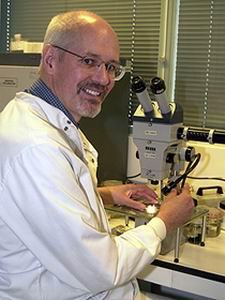Discovering and understanding
Deep sea
The unexplored sea
50 per cent of the Earth's surface lies below two kilometres of ocean, yet we know very little about what lives there. The deep seabed has an area of 27 million square kilometres, but we have only sampled approximately 2 km2 of it.

Commercial fishing, dumping industrial waste, oil leaks and coastal development are just some of the threats to our oceans today. Without knowing the biology of our oceans, it is impossible to say how these events might affect the marine life there.
Zoologist Gordon Paterson and his team here have been studying the deep sea to map its biology and understand how changes in the environment affect this unexplored ecosystem.
A hostile habitat
At temperatures of 2°C, without sunlight, and at immense pressure, the deep sea is an alien environment to us. We might have expected only a few species to be able to live there.

When Gordon and his colleagues collected samples from the seabed, they were amazed by the diversity of animal species they found - a diversity that rivals anything found on land and in shallow water.
How do so many different species survive in such a hostile environment? One explanation for the astonishing diversity of animal species in the deep sea is the Mosaic theory - this suggests that the constant changes in the environment maintains the diversity.
Mosaic theory
Constant environments tend to lead towards a small number of dominant species, where diversity is low. The deep sea is far from a constant environment: deep-sea storms, predators and food-falls from above frequently disturb the animals living in the mud.
Learn more about:
 |
Science theories
How do scientists use and test theories to discover knowledge about the natural world? |
Each time species are eradicated from an area of the seabed, species from neighbouring patches recolonise it. This constant change means that species on the seabed rarely become dominant in one area.
Being so hard to study, theories about the seabed are hard to test. However, the Mosaic theory is currently the best theory by which ocean scientists can explain the patterns of life they find on the seabed.